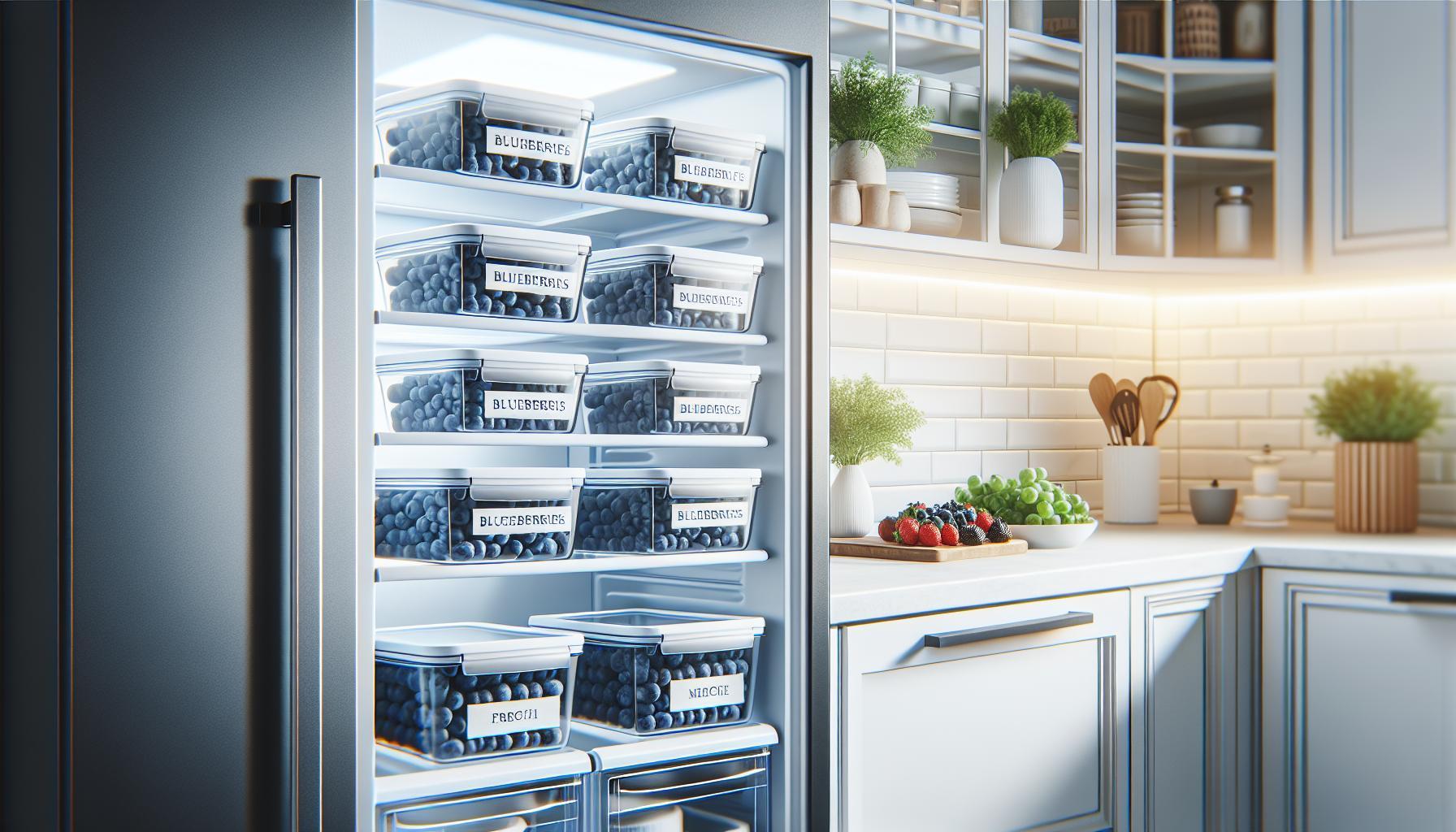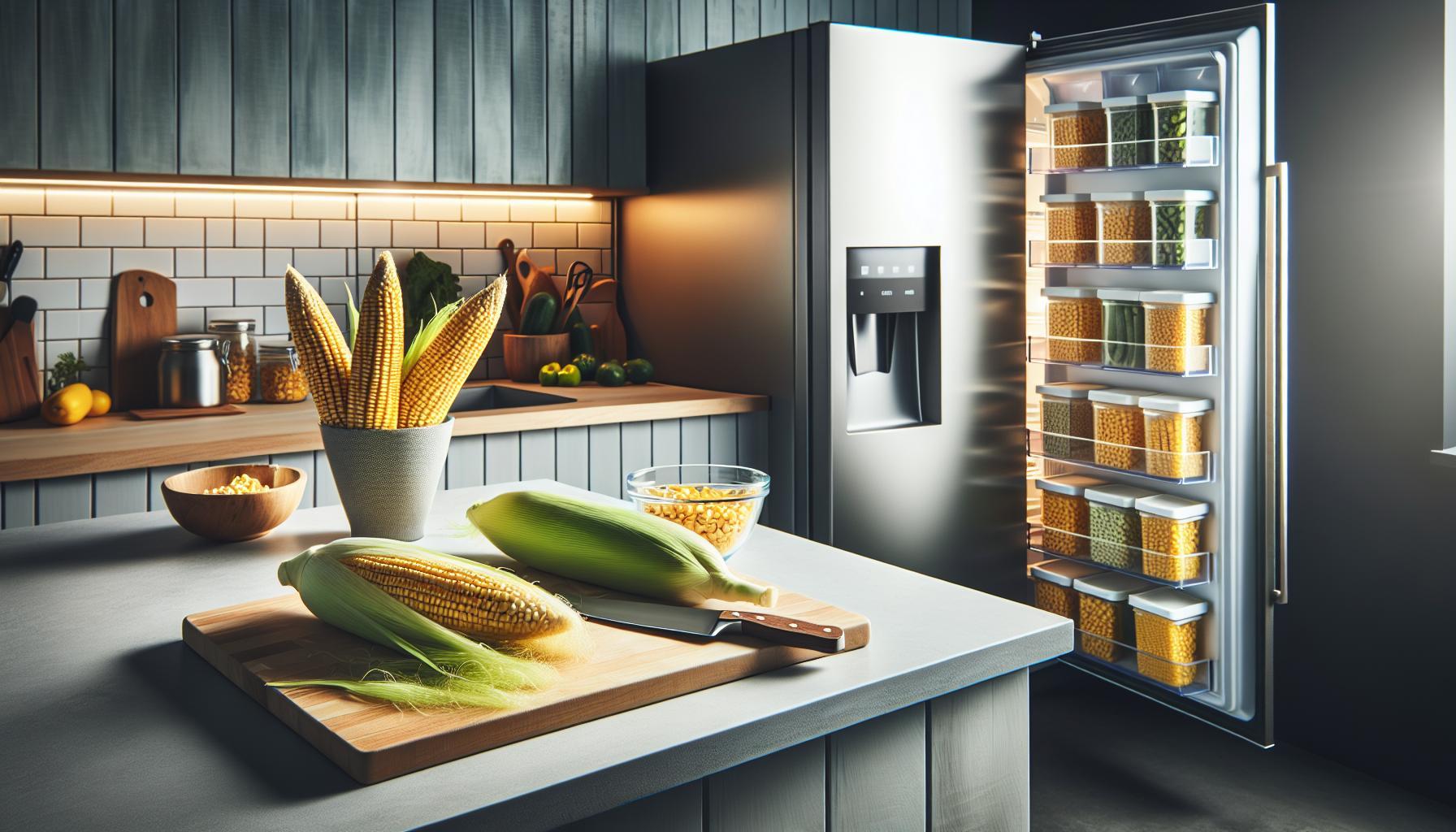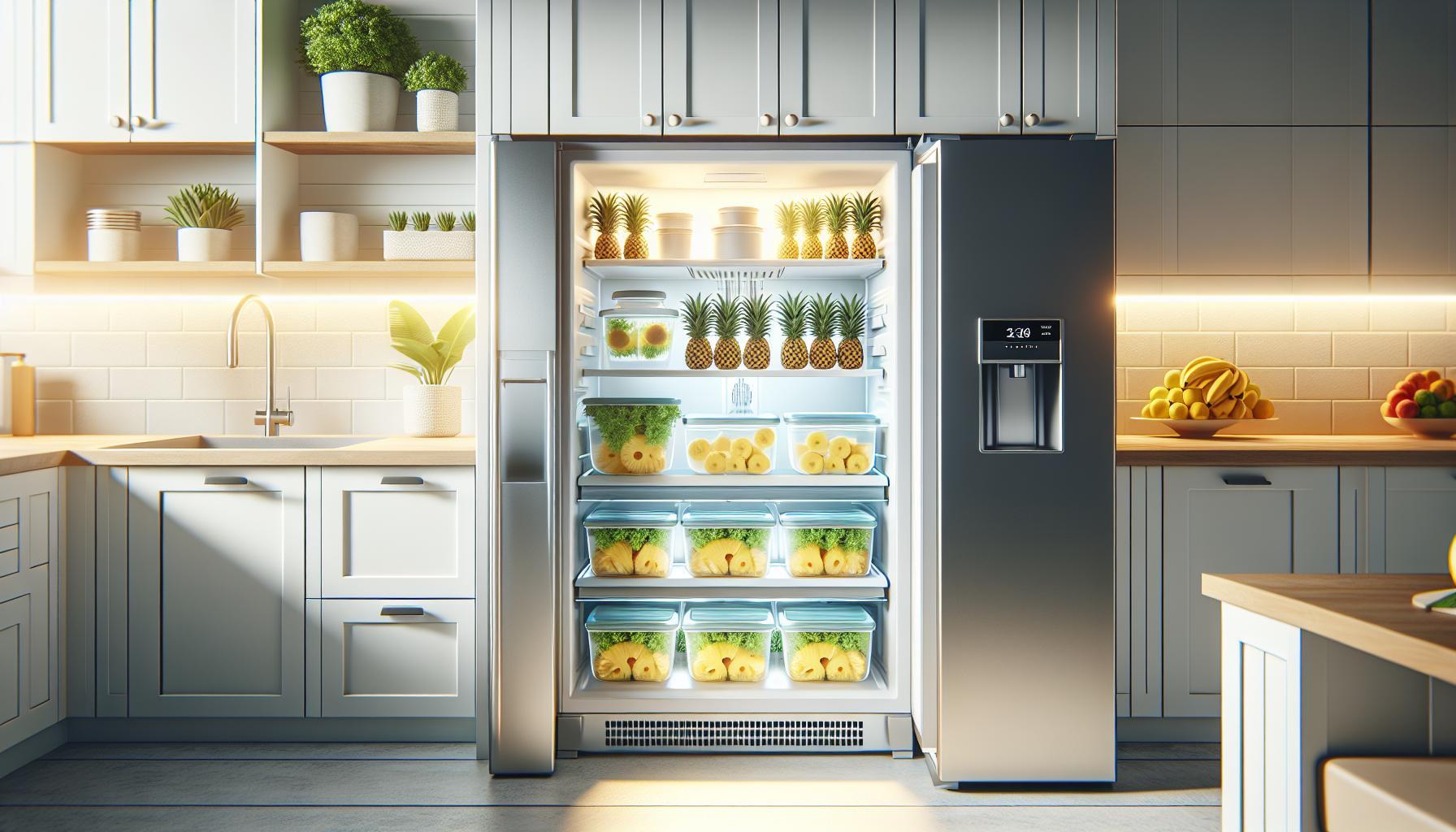Did you know that cantaloupe, with its refreshing sweetness and hydrating properties, is a summer favorite that can last longer in your fridge than you might think? Knowing how to properly store this juicy fruit can help you maximize its flavor and nutritional benefits, saving you both money and food waste.
In this guide, we’ll explore essential storage tips and answer the important question: how long does cantaloupe last in the fridge? Understanding this not only enhances your culinary experience but also ensures you enjoy the full spectrum of its health benefits, from hydration to antioxidants, while keeping your kitchen safe. Whether you’re prepping for a party or simply want to savor that delicious sweetness longer, your cantaloupe can be a delightful addition to your meals. Keep reading to ensure you get the most out of this nutritious fruit!
How Long Does Cantaloupe Stay Fresh in the Fridge?
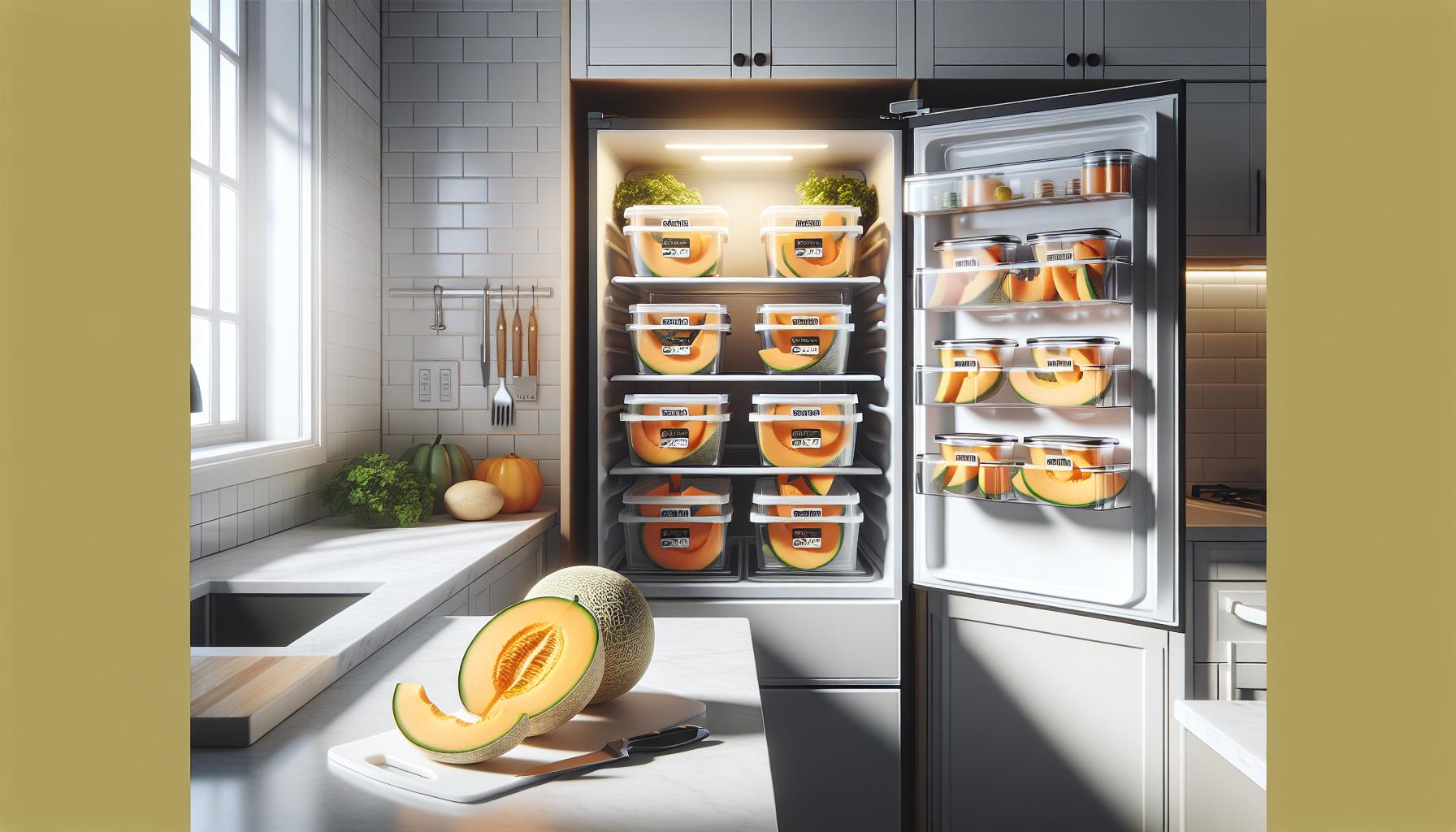
Cantaloupe is not just a delicious treat; it’s also a hydrating option that can help you make the most of your fruit consumption. When stored properly in the refrigerator, whole cantaloupes can stay fresh for about 5 to 7 days. Once cut, the flesh can remain usable for approximately 3 to 5 days if stored in an airtight container or tightly wrapped with plastic wrap. These timeframes ensure that you enjoy the sweet, juicy flavor without compromising on quality or safety.
To maximize freshness, it’s crucial to store cantaloupe at the right temperature. The ideal refrigerator setting is between 35°F to 40°F (1.5°C to 4°C). Keeping your cantaloupe in the crisper drawer can also help maintain its quality by providing a slightly more humid environment, which is beneficial for preventing it from drying out. It’s essential to avoid washing the whole cantaloupe until you are ready to eat it, as excess moisture can promote mold growth.
Proper monitoring of your stored cantaloupe is key. If you notice any signs of soft spots or an off smell, it’s best to err on the side of caution and discard it. By following these guidelines, you can enjoy the refreshing taste of cantaloupe longer while minimizing waste and ensuring food safety.
Factors Affecting Cantaloupe Shelf Life
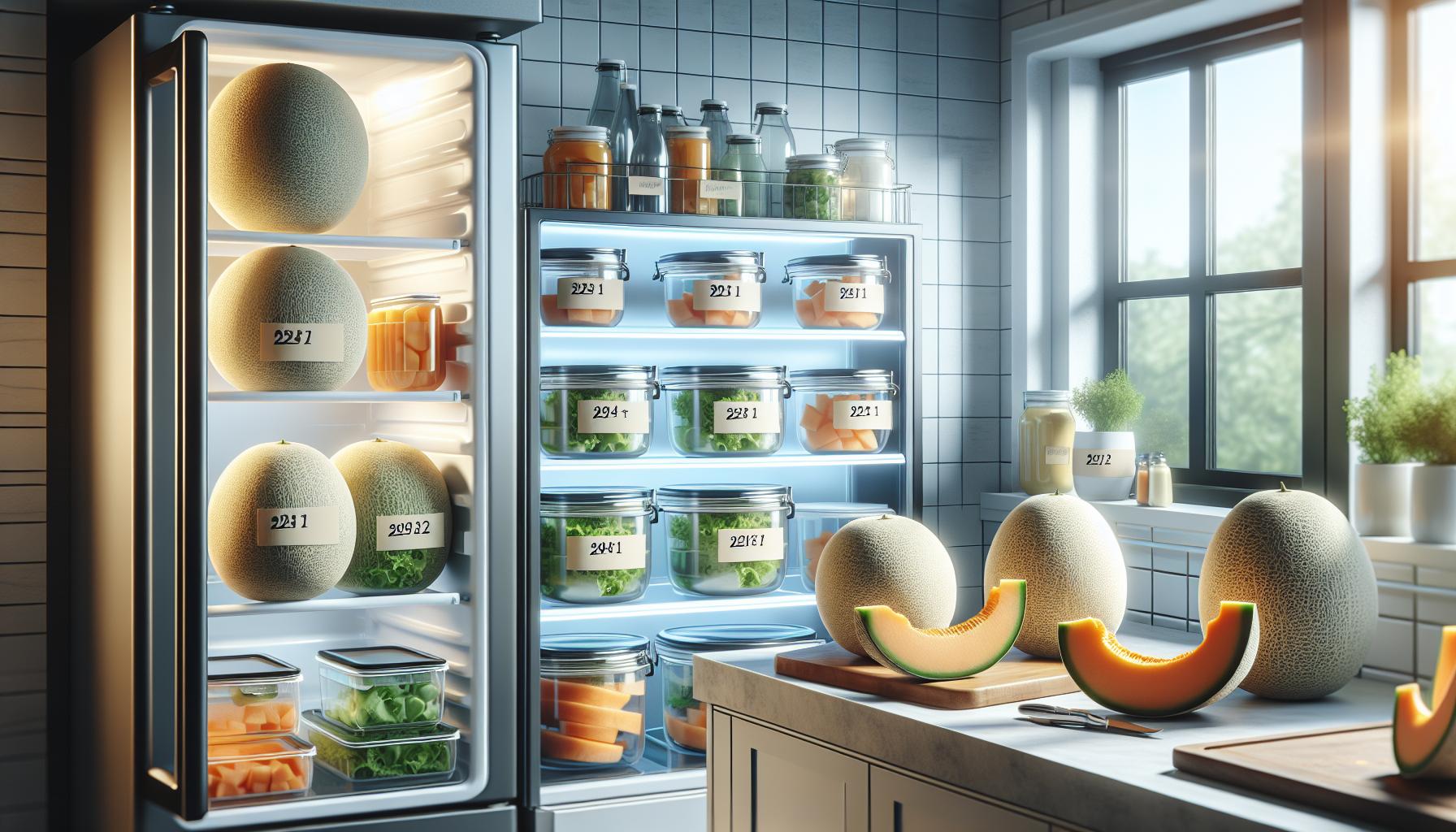
Cantaloupe, like all fresh produce, has a shelf life influenced by various factors. Understanding these elements can help you enjoy your melon without unnecessary waste. One of the most critical aspects affecting its longevity is ripeness at the time of purchase. A fully ripe cantaloupe has a higher sugar content, making it more prone to deterioration compared to one that is slightly underripe. Additionally, the storage temperature plays a significant role; maintaining a consistent temperature between 35°F to 40°F (1.5°C to 4°C) is essential for preserving its freshness.
Another factor to consider is humidity. Cantaloupe is best stored in a slightly humid environment, such as the crisper drawer of your refrigerator, which helps prevent it from drying out. Exposure to ethylene gas, emitted by fruits like apples and bananas, can also accelerate the ripening process and shorten shelf life. Hence, it’s advisable to store cantaloupe away from these ethylene-producing fruits.
Lastly, physical damage can significantly impact the shelf life of cantaloupe. Bumps, bruises, or cuts can create entry points for bacteria and mold, leading to faster spoilage. To minimize damage, handle cantaloupe gently and inspect it regularly for any signs of wear. By being mindful of these factors, you can extend the enjoyment of your cantaloupe and ensure you savor every sweet bite.
Best Ways to Store Cantaloupe Properly
To keep cantaloupe fresh and delicious, proper storage techniques are essential. Whether you’re dealing with a whole melon or cut pieces, how you store your cantaloupe will significantly affect its longevity and taste. Cantaloupes are best stored in the refrigerator, where they can last up to 5 to 7 days when whole and about 3 to 5 days once cut.
To maximize freshness, consider the following best practices for storing cantaloupe:
Whole Cantaloupe
- Refrigeration: Store your whole cantaloupe in the crisper drawer of your refrigerator. This section maintains optimal humidity levels, preventing the fruit from drying out.
- Avoid Ethylene Producers: Keep cantaloupe away from ethylene-producing fruits like bananas and apples, which accelerate ripening and may lead to spoilage.
Cut Cantaloupe
- Airtight Containers: After cutting your cantaloupe, promptly store the pieces in an airtight container. This minimizes exposure to air and moisture, keeping the fruit fresh for a longer period.
- Temperature Monitoring: Ensure that your refrigerator maintains a consistent temperature between 35°F to 40°F (1.5°C to 4°C) to prevent bacterial growth and spoilage.
Tips for Proper Storage
- Handle with Care: Be gentle with cantaloupe to avoid bruising, which can create entry points for mold and bacteria.
- Check for Spoilage: Regularly inspect stored cantaloupe for signs of spoilage, such as an off odor, sliminess, or excessive softness.
By adhering to these storage guidelines, you can enjoy the sweet, refreshing flavor of cantaloupe for days, reducing waste and enhancing your culinary experience.
Signs of Spoiled Cantaloupe to Look For

Identifying spoiled cantaloupe is crucial for both safety and enjoyment. The vibrant sweetness and juicy texture of a fresh cantaloupe can quickly turn to disappointment if you’re not vigilant. Start by checking for any prominent off-odors; a fresh cantaloupe will emit a subtle, sweet fragrance, whereas a spoiled one may have a sour or fermented smell, indicating decay.
Next, observe the exterior. The skin of a good cantaloupe should be intact and smooth, but signs of spoilage may include dark spots or a slimy texture. If any areas feel excessively soft or mushy, it’s a signal that the fruit is no longer fresh. Additionally, be cautious of any fuzzy mold, usually appearing around the stem area or on cuts; this is a direct indication that the cantaloupe has developed mold, and it should be discarded immediately.
When inspecting cut pieces, look for changes in texture and color. Freshly cut cantaloupe should have a bright orange hue and a firm texture. If you notice that the flesh has darkened or appears watery, it’s best to err on the side of caution and avoid consumption. Remember, regular checks on your stored cantaloupe can prevent unpleasant surprises at mealtime, helping you enjoy this delicious fruit while it’s at its best.
How to Tell if Cantaloupe is Ripe
Determining the ripeness of a cantaloupe is essential for enjoying its sweet, flavorful flesh at its best. A ripe cantaloupe will emit a sweet, fragrant aroma, which is one of the most telling indicators of readiness. You should also gently press on the blossom end-the part opposite the stem. If it yields slightly to pressure, it is likely ripe and ready for consumption.
Visual cues are equally important. Look for a cantaloupe with a tan or golden color on its rind, as opposed to green. A netted or slightly ribbed exterior indicates good ripeness. Additionally, check for a nice uniform shape-irregularities in shape can sometimes signal underdevelopment.
When selecting your cantaloupe, it’s helpful to give it a thorough examination. A ripe cantaloupe will feel heavy for its size, which suggests it’s full of juice and flavor. If you notice any soft spots or blemishes, proceed with caution, as these may indicate overripeness or spoilage.
- Aroma: Sweet, fragrant scent from the blossom end.
- Texture: Slight give when pressed at the blossom end.
- Color: Tan or golden hue with a netted structure.
- Weight: Heaviness for its size indicates juiciness.
Following these tips will help ensure that you pick the perfect cantaloupe, thereby enhancing your overall enjoyment of this delicious fruit.
Tips for Enjoying Cantaloupe at Its Best

Enjoying cantaloupe at its best involves more than just selecting the right fruit; it also includes proper storage and serving methods that enhance its flavor and texture. Cantaloupe should ideally be stored in the refrigerator to maintain its optimal sweetness and juiciness. When whole, a cantaloupe can last about 5-7 days in the fridge. Once cut, it’s best to consume the leftovers within 3-5 days to ensure the best taste and freshness. To prolong its life, wrap cut pieces tightly in plastic wrap or store them in an airtight container.
To enhance your tasting experience, consider pairing cantaloupe with other flavors. The melon’s natural sweetness complements a variety of items, such as prosciutto, mint, or even spicy chili powder for a refreshing summer treat. Creating a simple salad with cubed cantaloupe, fresh herbs, feta cheese, and a drizzle of olive oil can elevate your dish while adding a burst of freshness to your table.
For a delicious breakfast or snack, blend cantaloupe into smoothies with yogurt or other fruits like bananas or strawberries. The creamy texture and vibrant color make it a visually appealing and nutritious option. Remember to wash the cantaloupe thoroughly before cutting, as contaminants from the rind can transfer to the flesh when sliced.
Finally, if you find yourself with surplus cantaloupe, consider freezing it. Freeze cubed or sliced pieces on a baking sheet before transferring to a freezer-safe bag. This method helps preserve flavor and offers convenient options for later use, such as in smoothies or desserts. Just keep in mind that freezing may alter the texture, so it works best in blended applications.
By following these suggestions, you can enjoy the succulent sweetness of cantaloupe longer and create delightful dishes that highlight its delightful flavor.
Can You Freeze Cantaloupe for Later Use?
Freezing cantaloupe is a fantastic way to extend its freshness and make the most of its delightful flavor. This method allows you to enjoy the sweet, juicy taste of cantaloupe even when it’s out of season. However, it’s important to know the proper techniques to ensure that the texture and taste remain as appealing as possible.
When you freeze cantaloupe, start by selecting a ripe melon and washing it thoroughly to remove any surface contaminants. Cut the cantaloupe in half, scoop out the seeds, and then slice it into cubes or wedges according to your preference. Once prepared, lay the pieces in a single layer on a baking sheet. This flash-freezing technique prevents the pieces from sticking together, making it easier to grab only what you need later. Once they are frozen solid, transfer the pieces to a freezer-safe bag or container, removing as much air as possible to prevent freezer burn.
While frozen cantaloupe can last up to 10-12 months in the freezer, it’s best consumed within 3-6 months for optimal taste and quality. Keep in mind that freezing may alter the texture, making it softer when thawed. This change makes frozen cantaloupe ideal for use in smoothies, fruit salads, or desserts, rather than for eating fresh. To use frozen cantaloupe, simply remove the desired amount from the freezer and allow it to thaw in the refrigerator or blend it directly into your favorite beverage.
Incorporating frozen cantaloupe into your meals not only reduces waste but also adds a refreshing twist to various dishes. Try adding it to smoothies with yogurt, mixing it in sorbets, or using it as a topping for oatmeal or pancakes. By mastering the freezing process, you can enjoy the vibrant flavor of cantaloupe long after the season ends!
Creative Recipes to Use Leftover Cantaloupe
Using leftover cantaloupe creatively not only helps reduce food waste but also adds a burst of flavor to various dishes. With its sweet, juicy flesh, cantaloupe can inspire numerous culinary creations that are both refreshing and satisfying. Here are some innovative ways to utilize leftover cantaloupe:
Cantaloupe Salad: Combine diced cantaloupe with feta cheese, mint, and a drizzle of balsamic reduction for a refreshing salad. The sweetness of the melon pairs perfectly with the saltiness of the feta, while the mint adds a bright flavor. This dish serves as a delightful appetizer or a light summer meal.
Cantaloupe Smoothie: Blend cantaloupe with yogurt, a splash of orange juice, and a handful of spinach for a nutrient-packed smoothie. This concoction not only preserves the delicious taste of the melon but also boosts your daily intake of vitamins and minerals. For an extra kick, consider adding a scoop of protein powder or a tablespoon of chia seeds.
Grilled Cantaloupe Slices: For a unique treat, try grilling thick slices of cantaloupe. Brush them with olive oil, sprinkle with a pinch of salt and grill until charred. The heat caramelizes the sugars, intensifying the flavor. Serve these warm slices drizzled with honey and topped with chopped walnuts or pecans for a delicious dessert or side dish.
Cantaloupe Sorbet: Create a simple sorbet by pureeing cantaloupe with a bit of lime juice and sugar, then freeze the mixture. Stir every 30 minutes until fully frozen for a refreshing treat that captures the essence of summer. This sorbet is an excellent way to impress guests at gatherings or simply enjoy a guilt-free dessert.
By incorporating these creative recipes into your meal planning, you can ensure that no piece of cantaloupe goes to waste. Enjoy these delicious options while maximizing the freshness and flavor of your leftover cantaloupe.
Health Benefits of Eating Cantaloupe Regularly
Eating cantaloupe regularly not only satisfies your sweet tooth but also delivers a host of health benefits. This delicious melon is a rich source of nutrients that can enhance your overall well-being. For instance, a one-cup serving of cantaloupe contains roughly 60 calories and provides more than 100% of your daily vitamin A needs, which is essential for maintaining healthy vision and skin. Additionally, it offers significant amounts of vitamin C, an antioxidant that supports the immune system and can help ward off infections.
The hydration properties of cantaloupe contribute to maintaining your body’s fluid balance. Composed of more than 90% water, this fruit is an excellent choice for staying hydrated, particularly in hot weather or after physical activities. This hydrating effect not only quenches thirst but also helps to improve skin elasticity and moisture levels, giving you a vibrant, healthy glow.
Moreover, the dietary fiber found in cantaloupe supports digestive health. Incorporating fiber-rich foods into your diet can aid in preventing constipation and promoting regular bowel movements. The low glycemic index of cantaloupe also makes it a satisfying option for those managing their blood sugar levels, as it gradually releases sugars into the bloodstream, helping to keep energy levels stable.
In summary, regularly enjoying cantaloupe can bolster your vitamin intake, aid in hydration, enhance digestive function, and provide a satisfying, low-calorie treat. Making this nutritious fruit a staple in your diet not only amplifies your meals but also contributes to your overall health.
Storing Cantaloupe: Common Mistakes to Avoid
Storing cantaloupe can be straightforward, yet many people unknowingly make mistakes that shorten its shelf life or affect its delicious flavor. One major error is failing to store cantaloupe at the correct temperature. Ideally, whole cantaloupes should be kept at room temperature to enhance their flavor, but once cut, they must be refrigerated immediately to prevent spoilage. Leaving cut cantaloupe out at room temperature can lead to rapid deterioration, allowing harmful bacteria to flourish.
Another common mistake is neglecting to use airtight containers. When you store cut cantaloupe, using plastic wrap or a sealed container is essential to keep moisture in and odors out. Not covering it properly can result in the fruit absorbing other strong smells from your fridge, leading to an unappetizing taste. Moreover, keeping cut cantaloupe in the crisper drawer can trap moisture, causing it to become mushy. It’s best to store it on a higher shelf where air circulation is better.
Additionally, many overlook the importance of washing the cantaloupe before cutting it. The rind can harbor bacteria that can transfer to the flesh when you slice into it. Rinsing the exterior with running water and scrubbing with a produce brush helps mitigate this risk. Finally, consuming cantaloupe within a few days after cutting-ideally within 3 to 5 days-ensures the best taste and reduces the risk of spoilage.
By avoiding these common pitfalls-correctly storing whole versus cut cantaloupe, using airtight containers, washing before cutting, and consuming it timely-you can fully enjoy the delightful freshness and nutritional benefits of this popular summer fruit.
Maximizing Freshness: Prepping Cantaloupe Right
To ensure your cantaloupe remains as fresh and flavorful as possible, the preparation process is key. Start by selecting a ripe cantaloupe; it should feel heavy for its size and have a sweet aroma at the stem end. Once you’ve chosen a suitable melons, proper washing is essential. Rinse the whole cantaloupe under cool running water, scrubbing the skin with a produce brush. This step is crucial, as it prevents contaminants on the skin from transferring to the flesh when you cut into it.
After washing, the best way to slice a cantaloupe is to place it on a cutting board and cut it in half through the middle. Use a spoon to scoop out the seeds, and then you can cut each half into wedges or cubes as desired. For optimal freshness, any cut pieces should be stored immediately. Place the cantaloupe pieces into an airtight container or wrap them tightly in plastic wrap. This keeps moisture in while preventing the fruit from absorbing any unwanted odors from the fridge.
When storing cantaloupe in the refrigerator, remember that it should be consumed within 3 to 5 days for the best quality. Keeping it on a higher shelf, where air circulation is better, will also help prevent it from becoming mushy. If you have more cantaloupe than you can consume in this timeframe, freezing is an option. Simply cut the fruit into chunks, spread them out on a baking sheet to freeze individually, and then transfer them to freezer bags for longer storage. This method allows you to enjoy the sweet taste of cantaloupe even months later, making it perfect for smoothies or as a frozen treat on hot days.
FAQ
Q: How long does sliced cantaloupe last in the fridge?
A: Sliced cantaloupe typically lasts 3 to 5 days in the fridge when stored properly in an airtight container. To maximize freshness, store it at a consistent temperature below 40°F (4°C).
Q: Can I eat cantaloupe past its expiration date?
A: Eating cantaloupe past its expiration date is not recommended. While it may not immediately spoil, its quality, flavor, and safety could be compromised. Always check for signs of spoilage before consumption.
Q: What are the best storage methods for whole cantaloupe?
A: Whole cantaloupe should be stored in a cool, dry place at room temperature for a short period. Once cut, refrigerate in an airtight container to maintain freshness and extend its shelf life to 3 to 5 days.
Q: How can I extend the shelf life of cantaloupe?
A: To extend the shelf life of cantaloupe, store it whole at room temperature until ripe, then refrigerate. Additionally, keeping it in an airtight container will help maintain its moisture and prevent spoilage.
Q: How can I tell if cantaloupe is too ripe to eat?
A: Signs of over-ripeness in cantaloupe include a strong, unpleasant odor, very soft or mushy skin, and dark or wet spots. If any of these signs are present, it’s best to discard the fruit.
Q: Should I wash cantaloupe before refrigerating it?
A: Yes, washing cantaloupe before refrigerating is recommended to remove dirt and bacteria. However, avoid washing it until you’re ready to consume it as moisture can promote spoilage.
Q: Is it safe to freeze cantaloupe?
A: Yes, freezing cantaloupe is safe. Cut it into cubes and store in airtight freezer bags. Frozen cantaloupe can last up to 10-12 months but may have a change in texture once thawed.
Q: What nutrients are found in cantaloupe that affect its shelf life?
A: Cantaloupe is rich in moisture and essential vitamins like A and C, which can affect its shelf life. Higher moisture content can lead to quicker spoilage, so proper storage is essential to maximize its longevity.
Final Thoughts
Now that you know how to store cantaloupe for maximum freshness, why not make the most of that sweet taste? Remember, properly stored cantaloupe can last up to five days in the fridge. If you’re looking to extend the life of your other fruits, check out our guides on “How to Store Fresh Fruits” and “Best Practices for Fruit Preservation.” Don’t let any more delicious produce go to waste!
For more tasty tips and safe food storage advice, explore our site further-subscribe to our newsletter for updates! Share your own tips or questions about fruit storage in the comments below; we love hearing from you. Stay tuned for more practical advice that keeps your kitchen running smoothly!


